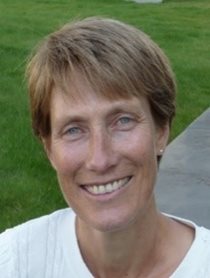Sunday, February 11, 2024, marks the 9th International Day of Women and Girls in Science. This year, the UN has chosen the theme "Women in Science Leadership: A New Era for Sustainability."
To commemorate this event, ESTRO has decided to feature a series of interviews with exceptional women who have played a key role in steering the Society and are shaping the future of Radiation Oncology. Today, we hear from Heidi Lyng, Chair of the Biology Committee.
What inspired your decision to pursue a career in Radiation Oncology? Were there specific experiences or individuals that influenced your choice?
I have been inspired from mentors and good colleagues, all of whom were important in steering my career towards becoming a full-time researcher in the field of radiation biology. My high school teachers in math and physics opened my eyes to the beauty of natural sciences. Therefore, I never doubted pursuing an education in physics and further in biophysics, fascinated by the bridge between physics and biology.
My enthusiastic university teacher and mentor during my PhD work, Professor and Physicist Tor Brustad, convinced me that my background in physics would be an excellent basis for research in radiation biology. After university, he offered me a PhD-fellowship and an inspiring research environment at the Institute for Cancer Research in Oslo.
When genome-wide technologies were introduced into molecular biology research, my always-positive colleague and geneticist Anne-Lise Børresen-Dale performed seminal work on breast cancer samples together with the Stanford milieu. She encouraged me to establish this technology to study radiotherapy responses in cancer patients. This marked the beginning of a line in my research that has led to many exciting collaborations, integrating genomic data with medical and microscopy imaging to better understand tumour radioresistance.
Later, with support from the institute leadership, I secured a fixed position as researcher at Department of Radiation Biology (as the first woman) and the opportunity to establish my own research group. Becoming a group leader, with all its obligations and responsibilities, including supervision of young talented students and postdocs, hard work to apply for grants, and keeping the group alive, has strengthened my confidence in the choice to pursue this career.
Do you anticipate that young women aspiring to follow a similar path will encounter the same challenges? How might their experiences differ, and what positive changes do you foresee for them?
My path has, to a large extent, been steered by luck and coincidences, both in terms of the people I have met and the opportunities I was offered – often finding myself “in the right place at the right time”. Today, young people seem to have more educational and job possibilities, potentially making it less likely to pursue a career in Radiation Oncology as the most appealing option.
Moreover, in research, the competition for funding has become harder, and there seem to be even fewer fixed positions than before. This poses a major challenge that makes a career in radiation biology research less attractive. However, this applies to both women and men, and, at least in Norway, women are no longer behind when it comes to grant allocations and leading research positions.
If you could offer advice to young women aspiring to pursue a career in Radiation Oncology, what key insights or recommendations would you share based on your own experiences?
I would say to young women: follow your heart and believe in your abilities. Seek contact, establish collaborations, and build networks with individuals who inspire and motivate you and who give you energy. When you are in the position to hire people for your team, find those who have expertise you don’t have, individuals you can learn from, and who will bring something new to your environment.

Heidi Lyng, Chair of the Biology Committee
Group leader and researcher in radiation biology, Institute for cancer Research, Oslo University Hospital, Oslo, Norway